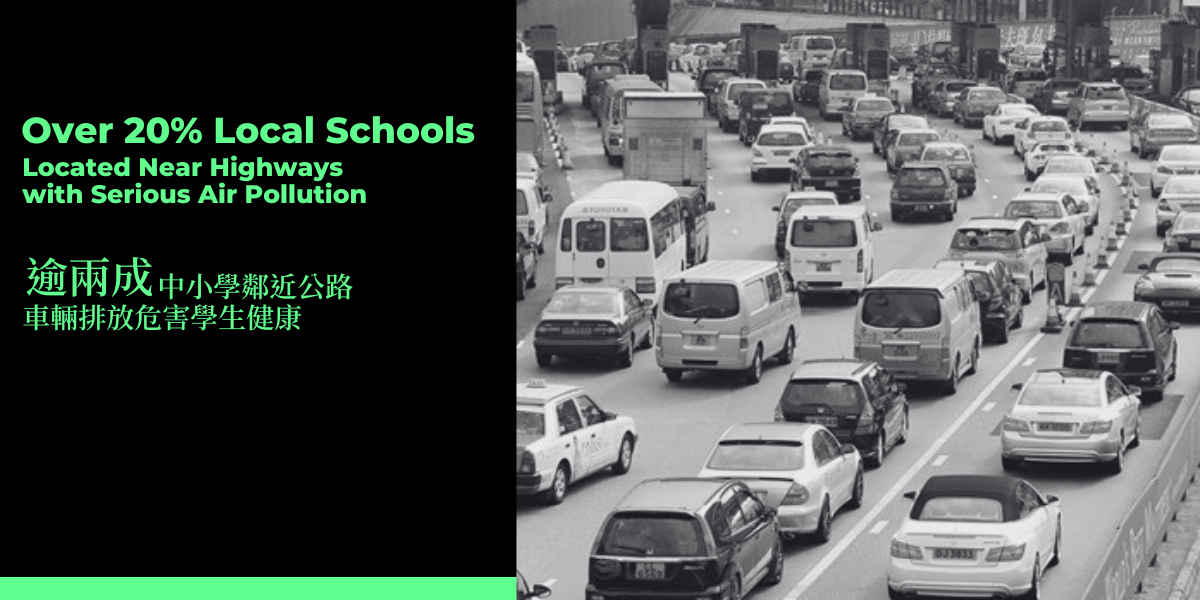
Over 20% Local Schools Located Near Highways, Putting Students’ Health at Risks
Children spend a considerable proportion of their time at schools, pollution levels around and within the school sites therefore significantly impact their wellbeing. Clean Air Network (CAN) estimates that over 20% of local primary and secondary schools are located within 150 meters of highways with heavy traffic, putting approximately 165,000 students at the health risks caused by air pollution.
Air pollution is linked to various health conditions such as asthma, allergies, respiratory and cardiovascular diseases, and even cancer. Children are particularly susceptible since their organs and immune systems are still developing, and they also breathe faster, thus taking in more polluted air than adults. Their cognitive development and learning performance would be affected as well.
Heavy traffic brings high emissions. Research has shown that busy roadways affect air quality within approximately 150m, and California legislation has banned the construction of new schools within 150m of highways in 2003.
To better understand the situation in Hong Kong, CAN made use of open data to study the proximity of local schools to highways under the Hong Kong Strategic Route and Exit Number System, referencing 150m as a recommended safe distance. The results indicated that 25% of primary schools and 22% of secondary schools are less than 150m away from highways.
Among the 18 districts, Yau Tsim Mong (52%) has the highest percentage of primary schools located within the 150m buffer. Kowloon City (46%) and Tuen Mun (43%) also have a very high percentage.
For secondary schools, the district that has the highest percentage is Tsuen Wan (43%), closely followed by Wong Tai Sin (42%) and Yau Tsim Mong (38%).
Since children are one of the most vulnerable groups, their exposure to air pollution should be minimized by all means, including a better urban planning approach. However, that does not seem to be a priority at present. The Hong Kong Planning Standards and Guidelines (HKPSG) issued by the Planning Department recommends that residential land uses should maintain a buffer distance of 300m from trunk roads, and 180m from primary distributors, but there are no standards set for schools.
In our education project Clean Air Neighbourhood, we led students to measure the air quality around their schools. The most shocking results were those recorded at major roads and busy bus terminals – apparently traffic is a main source of pollution in the school communities. These pollutants do not only influence the outdoors, but they also worsen the indoor air quality of school facilities.
CAN believes it is time to put our future generation’s health at priority. We suggest the following measures to be taken:
- Revise the HKPSG and impose buffer distance between schools and trunk roads.
- Provide resources to existing schools for monitoring air quality and adopting relevant mitigation measures.
- Expand low emission zones to school districts.
- Accelerate the adoption of a zero-emission commercial fleet, including franchised buses.

